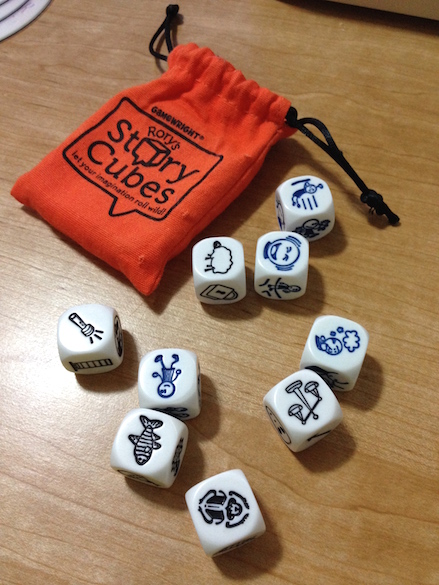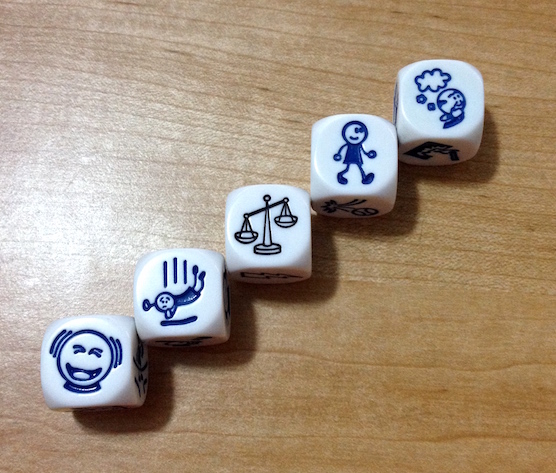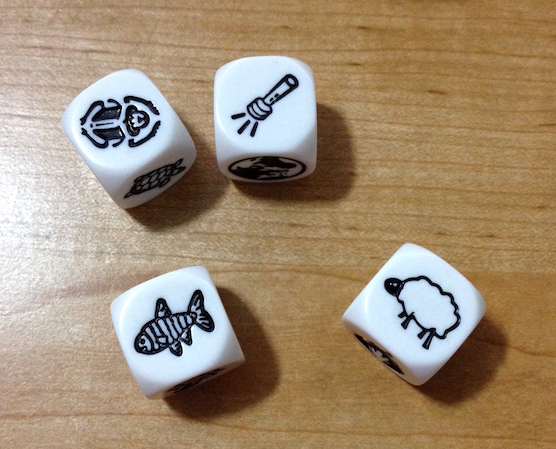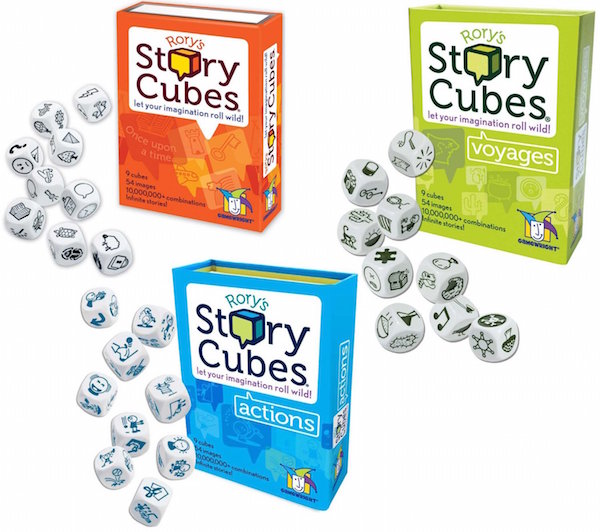Have you ever had trouble coming up with story ideas? I know I have, and if you're anything like me, it would probably help you a great deal if you had a tool for coming up with story ideas on the fly. Enter Rory's Story Cubes...
More...
Introduction to Rory's Story Cubes
I want to start by saying that this isn't the usual blog post I do here at EricBeaty.com. I'm finally getting to focus more on the fiction side of my writing, and it's a great change of pace. So I hope you enjoy these types of posts because I'm planning on doing many more of them in the future.
I recently created the majority of a brand new story with the help of Rory's Story Cubes, and I want to share it with you here in it's entirety. The story isn't complete and isn't edited (and therefore doesn't represent my best writing), but it should give you an idea of the process I used to create a completely new story with the use of these simple dice.
My goal in this post is to help you see where these types of ideas can take you and let you finish the story yourself; a sort of writing exercise—or writing prompt, if you prefer.
That being said, let's get on with the story.
Rory's Story Cubes: My Configuration
I've had the original version of Rory's Story Cubes (the orange pack) for about a year, and they basically just sat on my desk as a novelty item a couple of months after I first played around with them. But ever since I started getting serious about my writing, I've been learning all I can about the craft of writing fiction. So I decided to give Rory's Story Cubes another try.
Recently, while at my local bookstore, I purchased a different adaptation of Rory's Story Cubes called Actions (the blue pack) to try out. Maybe this will give me some better, more inspirational options, I thought. As it turned out, my new "booster pack" (for those of you who play various role-playing card games) did, in fact, serve in providing some much needed inspiration.
I took both the original and the new Actions pack of Rory's Story Cubes and combined them, creating a new configuration of the recommended nine dice, shook them in my hands, and rolled them on my desk. This is what I ended up with:

My configuration included four Action cubes and five Original cubes
Story Structure using Rory's Story Cubes
If I was planning on telling stories with my new configuration—or any configuration—of Rory's Story Cubes, I would need some help in crafting my story.
I'd been attending a local writer's workshop lately, and it just so happened that we were about to go over plot and story structure. So I decided as an additional resource I would search the Internet for someone who had used Rory's Story Cubes within a story structure. I found a great guide that I used for my story, which I will reveal in a bit.
The main points the guide were as follows:
- Cube 1: the inciting incident
- Cube 2: setup
- Cube 3: first turning point
- Cube 4: complication
- Cube 5: second turning point/point of no return
- Cube 6: build towards crisis
- Cube 7: crisis
- Cube 8: move to resolution
- Cube 9: resolution/outcome
My First Five Story Cubes
Now, with Rory's Story Cubes and a new plot structure to follow, I was ready to begin. Here's what I ended up rolling for the first five plot points:

I've used all four of my Action cubes already!
One of the great things about the guide that I found was that it gives several methods for interpreting the images on the cubes. Notice also that I staggered the first five Rory's Story Cubes to help remind me of the "Rise and Fall" action of the typical story structure.
In the story I'm about to reveal, I'll show you my interpretation of each cube and the parts they played in the overall story. For now, notice that four out of five cubes are represented by the Actions set (blue dice) and only one so far is an original Rory's Story Cube (black dice).
The fun thing about this method is that it's relatively easy to get started.
Once I got started writing, the story began to unravel itself entirely on it's own. Characters started appearing in my mind, situations started presenting themselves, and I was able to see a logical path in which to follow the story as it was being created. This would've been much more difficult had I not had a structure to start with.
Now, granted, it's not the best story in the world, but it's a start.
And all you need to get to the end of anything is to just START!
And Then There Were Four...
Here are what the remaining four cubes looked like after I had the idea to stop and let the readers of my blog continue the story:

Only four cubes left. Now it's your turn to finish the story!
If you've come this far, then you're no doubt motivated—or at least curious—to use the above four remaining cubes and team up with me to determine what sort of ending the characters in this story experience.
I invite you to give it your best shot and don't give up. Try to complete the story. As you'll see below, I came up with plenty of ideas base on just five Rory's Story Cubes. With only four to finish, there's plenty more for you to add to it to make it GREAT.
And when you're finished, feel free to edit the story to your liking and share it with others (just please remember to give credit to Eric Beaty for the idea).
Here's to your journey in fiction, whether you're just starting out or have been writing creatively for many years, you owe it to yourself to keep giving it your best. You'll never know what great things you could do if you don't see them through to the end.
As Promised, Here's Your Story
Click the button below to finish the Rory’s Story Cubes story...
If you’ve found this content to be valuable to you, please share it with others whom you feel it will also benefit by using the share buttons conveniently located below. Also, be sure and add this page to your favorites or bookmarksfor future reference. Thank you.
E
This post created using Thrive Content Builder.

